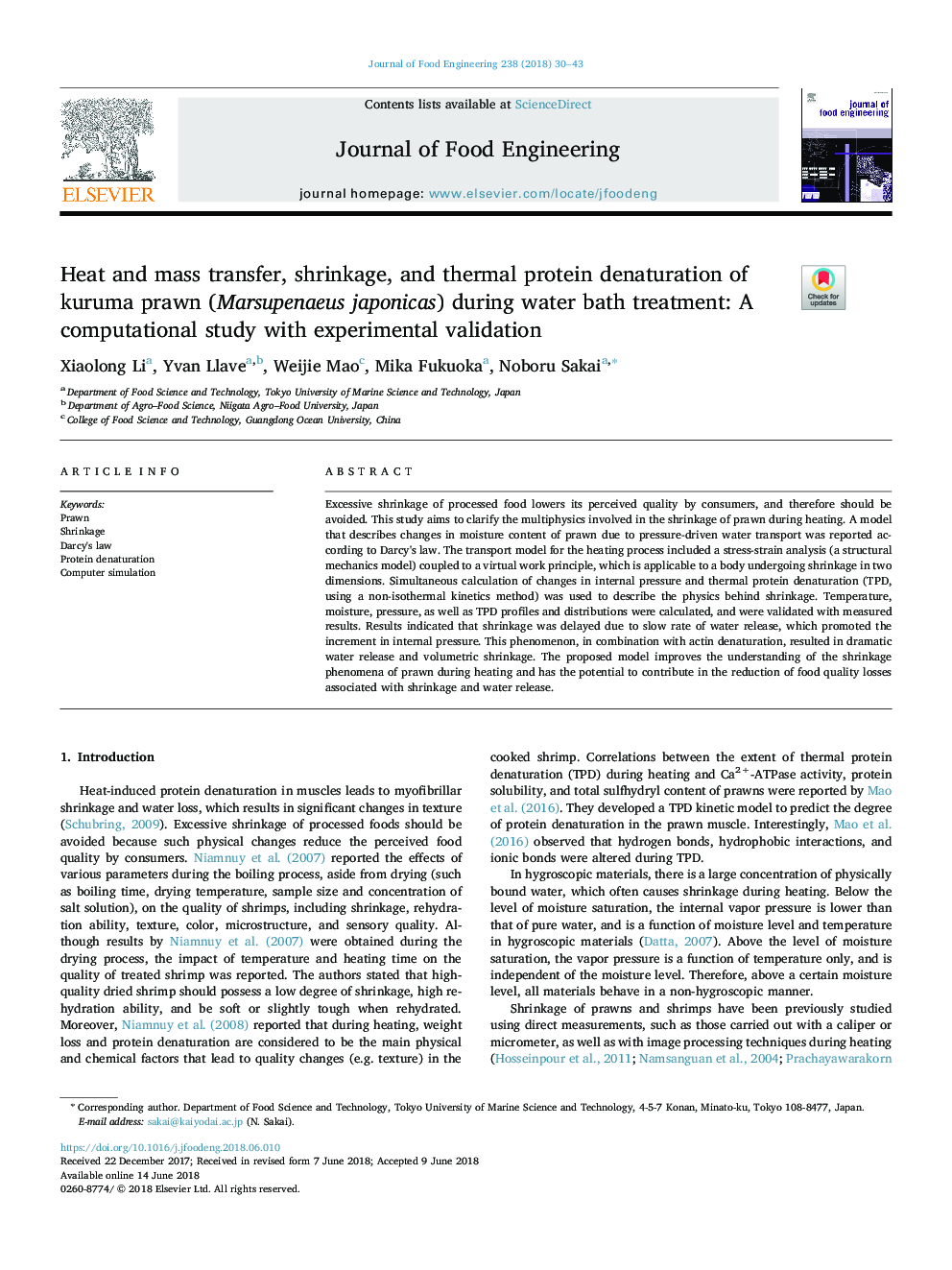| Article ID | Journal | Published Year | Pages | File Type |
|---|---|---|---|---|
| 6664393 | Journal of Food Engineering | 2018 | 14 Pages |
Abstract
Excessive shrinkage of processed food lowers its perceived quality by consumers, and therefore should be avoided. This study aims to clarify the multiphysics involved in the shrinkage of prawn during heating. A model that describes changes in moisture content of prawn due to pressure-driven water transport was reported according to Darcy's law. The transport model for the heating process included a stress-strain analysis (a structural mechanics model) coupled to a virtual work principle, which is applicable to a body undergoing shrinkage in two dimensions. Simultaneous calculation of changes in internal pressure and thermal protein denaturation (TPD, using a non-isothermal kinetics method) was used to describe the physics behind shrinkage. Temperature, moisture, pressure, as well as TPD profiles and distributions were calculated, and were validated with measured results. Results indicated that shrinkage was delayed due to slow rate of water release, which promoted the increment in internal pressure. This phenomenon, in combination with actin denaturation, resulted in dramatic water release and volumetric shrinkage. The proposed model improves the understanding of the shrinkage phenomena of prawn during heating and has the potential to contribute in the reduction of food quality losses associated with shrinkage and water release.
Related Topics
Physical Sciences and Engineering
Chemical Engineering
Chemical Engineering (General)
Authors
Xiaolong Li, Yvan Llave, Weijie Mao, Mika Fukuoka, Noboru Sakai,
